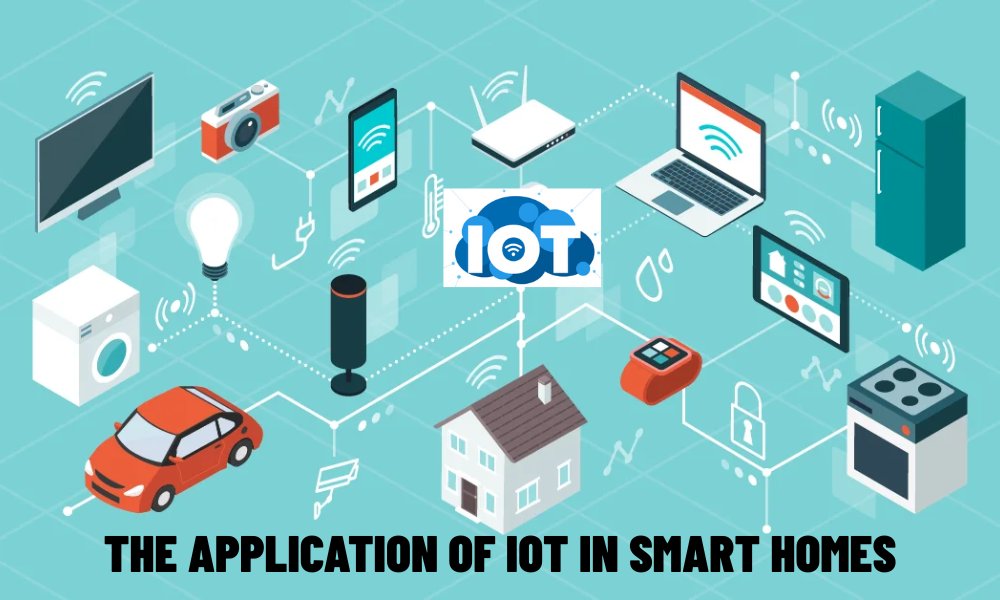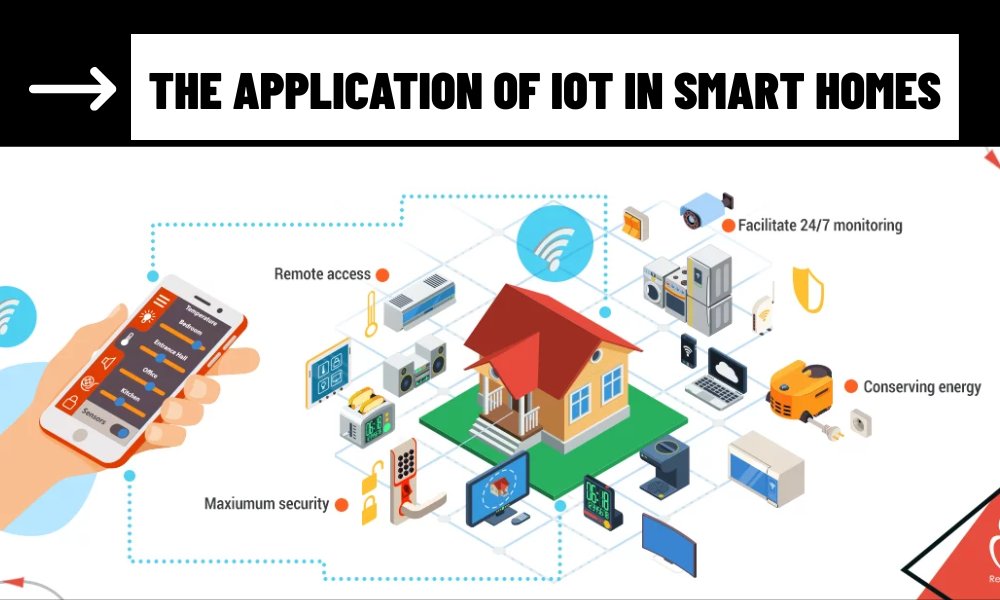The Internet of Things (IoT) has rapidly become a driving force in revolutionizing the way we live, particularly within the realm of smart homes. By connecting everyday devices to the internet, IoT enables seamless communication between various components of a home, creating an environment that is intelligent, efficient, and automated. Through the integration of IoT, homes are becoming more responsive to the needs and preferences of their residents, while offering increased convenience, energy efficiency, and security.
Contents
1. Smart Lighting Systems
One of the most common IoT applications in smart homes is smart lighting systems. These systems allow homeowners to control lighting remotely via smartphones, tablets, or voice-activated assistants like Amazon Alexa or Google Assistant. Through IoT-enabled bulbs and switches, users can program lighting schedules, adjust brightness, or change colors to suit specific moods or needs, all from the convenience of their devices.
Moreover, smart lighting systems often feature motion sensors that can automatically turn lights on or off based on the presence of people in the room, contributing to energy conservation.
2. Smart Thermostats
IoT-based smart thermostats are revolutionizing the way we manage energy in the home. Devices like the Nest Thermostat or Ecobee use IoT technology to learn a homeowner’s daily schedule and adjust the temperature accordingly. For example, the thermostat can lower the heating or cooling when no one is at home, and then automatically return to a comfortable setting before the residents return. This results in energy savings and cost reduction while maintaining comfort.
Some smart thermostats even allow users to control the temperature remotely, making it possible to adjust the home’s climate from anywhere via a smartphone app.
3. Smart Security Systems
Security is one of the most compelling reasons people turn to smart home technology, and IoT plays a key role in enhancing home security. Smart security systems like video doorbells (e.g., Ring) or security cameras (e.g., Nest Cam) enable homeowners to monitor their property in real-time. These systems connect to the internet, allowing users to view footage, receive alerts, and communicate with visitors or intruders via their smartphones.
Additionally, IoT-enabled security systems can work together with smart locks that allow homeowners to lock or unlock doors remotely, ensuring secure access control without the need for physical keys.

4. Smart Appliances
IoT has also had a significant impact on household appliances, creating smart appliances that can be controlled via the internet. These include smart refrigerators, washing machines, ovens, and vacuum cleaners. For example, a smart fridge can track food inventory, alert users when supplies are running low, and even suggest recipes based on what’s inside. Similarly, a smart oven can be programmed to preheat at a specific time, or you can control cooking settings remotely via an app.
IoT in appliances leads to increased convenience, as users can monitor and control their devices from anywhere, and it also promotes energy efficiency, as appliances can operate more optimally based on usage patterns.
5. Voice Assistants and Automation
Voice-controlled IoT devices, such as Amazon Echo or Google Home, act as central hubs for controlling various smart devices in the home. These voice assistants integrate with lighting, thermostats, security systems, entertainment, and more. By simply speaking commands, users can adjust the temperature, turn on the lights, play music, or even control other IoT-enabled appliances, making their homes more hands-free and efficient.
Beyond voice assistants, IoT also allows for home automation, where multiple devices are linked together to create routines and schedules. For instance, you can set your smart home to turn off all lights, adjust the thermostat, and lock the doors when you leave for work, all with a single command or automatically based on time.
6. Smart Energy Management
IoT plays a crucial role in managing home energy consumption efficiently. With smart energy meters, homeowners can monitor and track their energy use in real time, receiving feedback on which devices consume the most energy and when. This information helps users identify areas where they can save energy and reduce costs.
Moreover, IoT-enabled systems can work with solar panels and battery storage to optimize energy usage, such as storing solar energy during the day for later use in the evening, or using grid power only when necessary to maintain energy efficiency.
7. Smart Water Management
IoT is also making strides in water management, an increasingly important area as water conservation becomes more critical. Smart irrigation systems like Rachio use weather data to automatically adjust watering schedules for lawns and gardens, preventing over-watering and saving water.
In addition, smart water leak detectors can notify homeowners of leaks or potential flooding in real time, preventing significant water damage and reducing waste. These sensors are particularly useful in areas with older plumbing systems or in regions prone to water-related issues.
8. Smart Health and Wellness
IoT devices are also revolutionizing the way we approach health and wellness in the home. Smart beds, for example, can track sleep patterns and adjust the bed’s firmness or temperature based on user preferences for optimal rest. Fitness trackers, smart scales, and other wearable health devices provide real-time data that can be analyzed to help improve overall health and wellness.
In addition, air purifiers and smart thermostats can improve air quality, regulate indoor temperatures, and maintain a healthy, comfortable living environment.
The future of IoT in smart homes
The application of IoT in smart homes has created a new era of convenience, security, energy efficiency, and comfort. Through the integration of IoT technologies, homeowners can now control and optimize every aspect of their home environment, from lighting and heating to security and appliances, all through their smartphone or voice commands.
As technology continues to evolve, IoT will likely play an even more central role in the design and function of future homes, making them smarter, more sustainable, and better connected to the needs of their inhabitants. The possibilities for IoT in smart homes are virtually endless, transforming the way we live, work, and interact with our environments.



